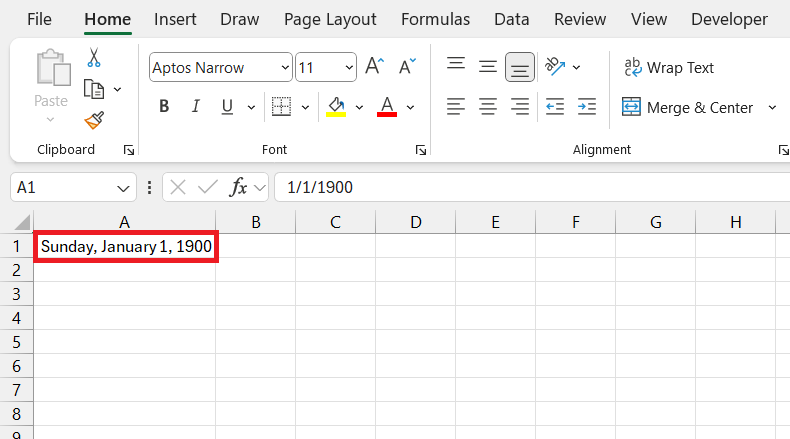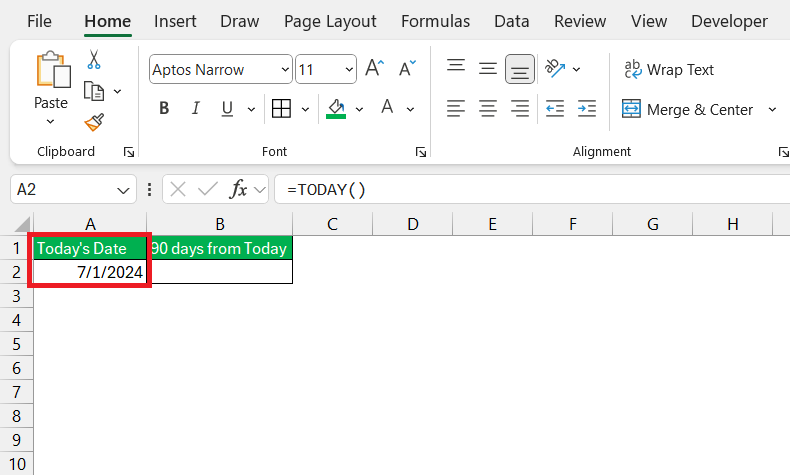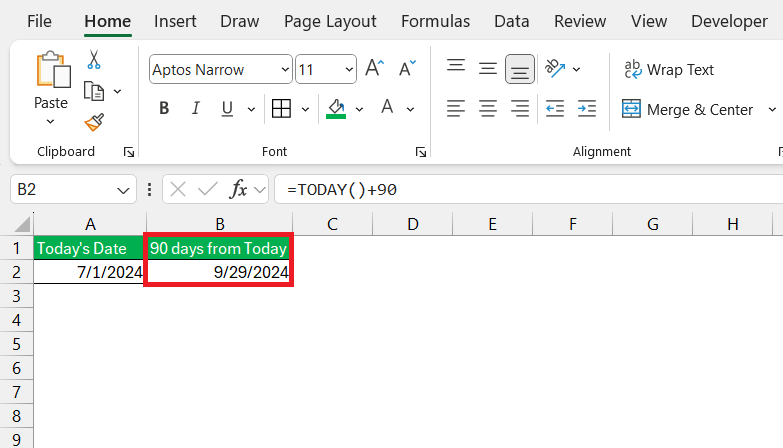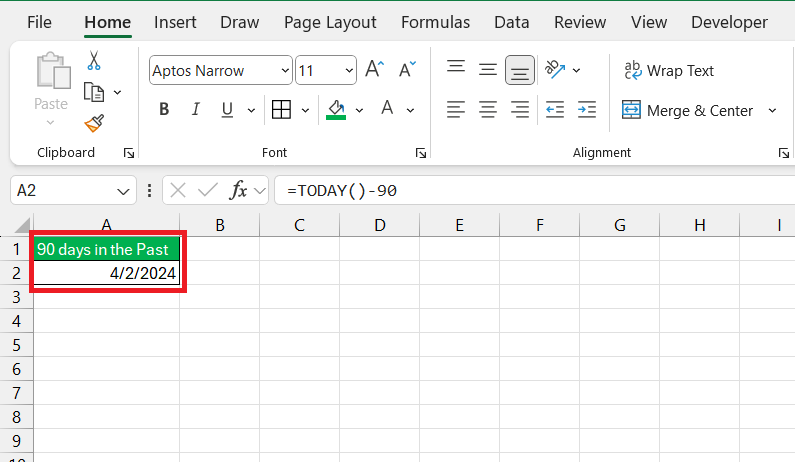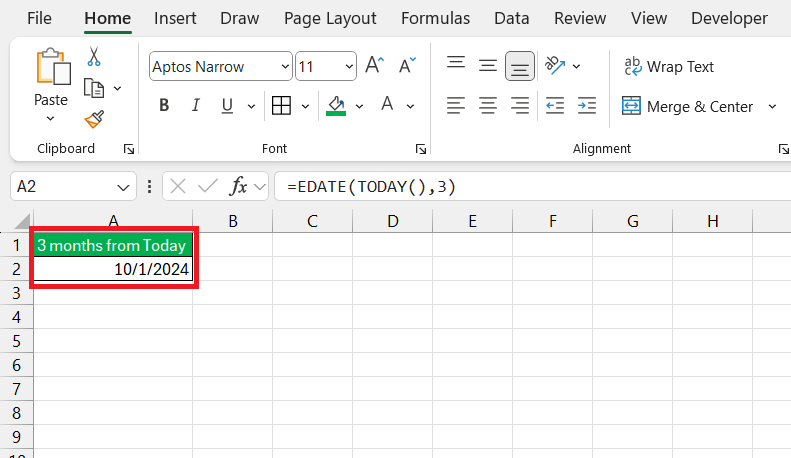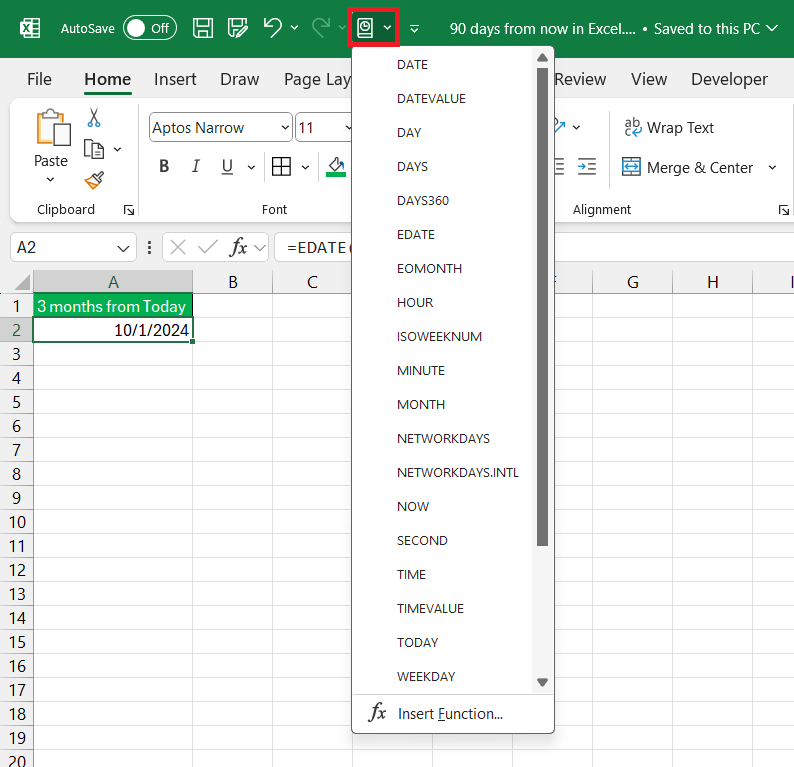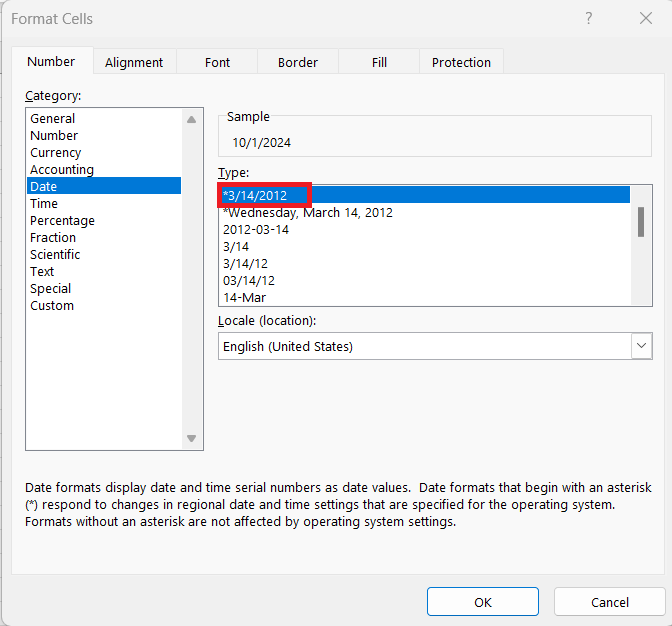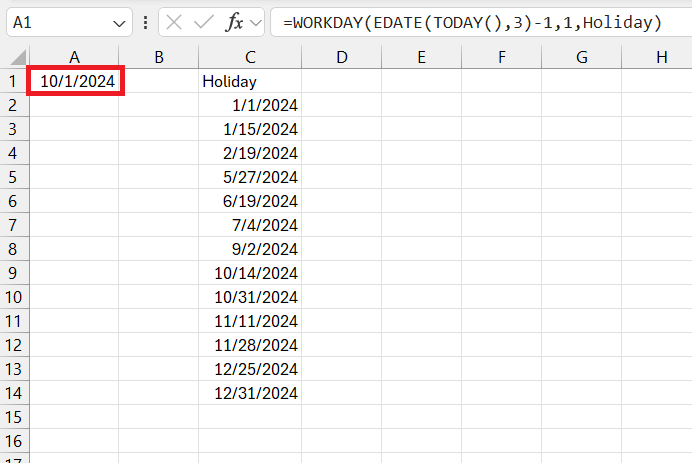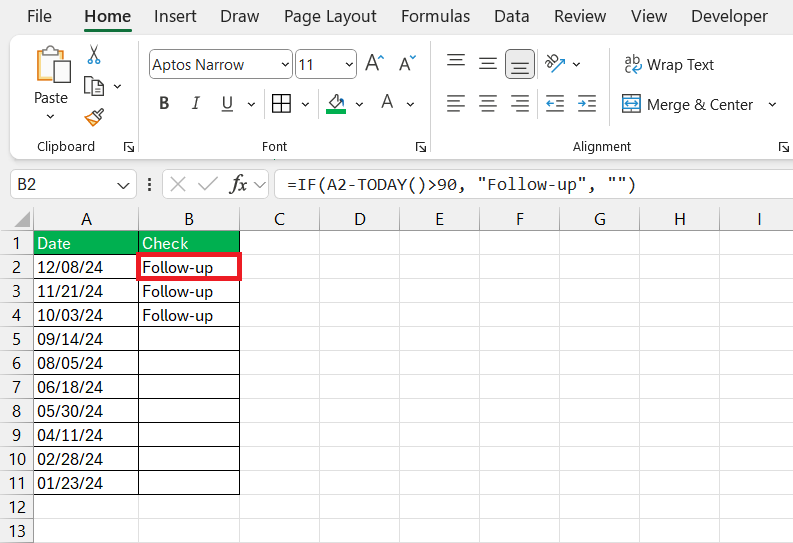Adding 90 days from today’s date in Microsoft Excel is a straightforward task that can significantly enhance your ability to manage deadlines, schedules, and project timelines. With Excel’s powerful date functions, you can automate this process, saving time and reducing the risk of manual errors. In this article, we will guide you through simple and effective methods to calculate a date 90 days from today, ensuring you stay on top of your planning and organizational needs. Whether you’re a beginner or an experienced Excel user, these tips will help streamline your workflow.
Key Takeaways:
- Simple Addition: Adding 90 days from today’s date in Excel is straightforward with the formula
=TODAY()+90. - Automation: Automating date calculations saves time and reduces the risk of errors.
- Backward Calculations: Use
=TODAY()-90to find the date 90 days in the past. - Project Planning: Excel’s date functions are essential for effective project management and scheduling.
- Advanced Functions: Functions like
WORKDAYandEDATEprovide more control over business and financial planning
Table of Contents
Accelerating Your Date Calculations in Excel
Understanding the Basics of Date Functions
When tackling date calculations in Excel, knowing the basics is crucial for swift and accurate results. Excel thinks of dates as serial numbers, making them perfect candidates for simple arithmetic. Every date is a unique number starting from January 1, 1900, which is serial number 1, onwards.
Understanding this system is the first step in using Excel’s date functions effectively. With this knowledge, you can easily add or subtract days to get new dates.
Harnessing the Power of Excel for Quick Date Results
Harnessing the Power of Excel for those quick turnaround date results is not just a time-saver; it’s a game changer. You can utilize features like conditional formatting to highlight key dates, ensuring you’re alerted when a deadline or milestone is 90 days away.
Moreover, Excel’s vast array of formulas, from the simple TODAY() function to the more complex WORKDAY() and NETWORKDAYS(), enables you to manage tasks with high precision. Whether you’re preparing for upcoming events or ensuring compliance with time-sensitive deliverables, Excel facilitates an effortless approach to staying ahead of schedule.
Add 90 days from Today in Excel
The Simple Formula to Project 90 Days Forward
Projecting 90 days into the future is a breeze with the simple formula =TODAY()+90 .
STEP 1: In A2 cell type in the TODAY() function.
STEP 2: In B2 just type this formula into any cell, and Excel will automatically generate the date that’s 90 days ahead.
It’s perfect when you need to plan for the upcoming quarter, set reminders for personal milestones, or schedule your work projects. This one-step method eliminates guesswork and manual counting, giving you instant and accurate results every time.
Rewinding Time: Calculate 90 Days in the Past
Calculating 90 days in the past is as straightforward as projecting forward. By using the formula =TODAY()-90, Excel whisks you back in time, instantly giving the date that was 90 days before today.
This is particularly handy when analyzing historical data, assessing past performance, or simply recalling key dates. By embracing this simple subtraction formula, you can confidently navigate backward in your timeline with the same ease as moving forward.
Real-World Applications of 90-Day Calculations
Financial Forecasting and Planning with 90-Day Projections
For financial wizards, the ability to project 90 days into the future is essential. Whether it’s pinpointing loan maturity dates, scheduling payment deadlines, or carving out investment horizons, Excel proves itself as a valuable ally.
Use the EDATE function to forecast a quarter ahead, allowing you to see financial outcomes or required actions on the horizon. For example, =EDATE(TODAY(),3) instantly provides the date exactly three months from today.
This function is a powerful tool for financial forecasting and planning, letting you stay proactive and prepared for the financial road ahead.
Tracking Project Deadlines and Milestones
Keeping your projects on track is a piece of cake when you’re using Excel to monitor deadlines and milestones. With the 90-day calculator technique, set your key dates and use functions like =PROJECTSTART+90 to determine when a project phase should wrap up.
Color-code these dates for visual tracking, or integrate them into a comprehensive Gantt chart within Excel for a full project overview. Adding this structure to your project timeline ensures every task is aligned with your project’s pace, and no deadline is met without preparation.
Tips and Tricks to Master 90-Day Date Functions
Shortcut Techniques for Faster Date Management
To turbocharge your date management in Excel, embrace a suite of shortcut techniques. Skip the dialog box shuffle by using keyboard shortcuts like Ctrl + ; to insert today’s date instantly into a selected cell. Want to propel 90 days ahead without typing a formula?
Select a date cell, then press Ctrl + R to use the fill handle dragging across cells, and Excel will autofill the dates for you. And don’t forget about the Quick Access Toolbar; customize it with the ‘Date and Time’ function for one-click date inputs.
By mastering these shortcuts, you streamline your workflow, making date calculations a snap.
Avoiding Common Mistakes in Date Calculations
To avoid common pitfalls in date calculations, it’s crucial to check for accuracy and consistency in your data entry. One typical error is mixing up different date formats, which can lead to incorrect calculations. Ensure all dates are in the same format by using the ‘Format Cells‘ dialog box.
Additionally, be cautious with leap years and time zones when working with international dates. Using functions like DATEVALUE can also prevent errors by converting text representations of dates into Excel’s date format. Remember to account for holidays and non-working days in your calculations—tools like the WORKDAY function can exclude these from your 90-day count for more accurate business date calculations.
Advanced Functionality for Professionals
Crafting Custom Formulas for Complex Scenarios
When off-the-rack formulas just don’t fit the complex scenarios you encounter, crafting custom formulas in Excel is the way to go. By combining various functions, you can create a bespoke solution tailored to your needs. For instance, if you want to find the next quarterly review date, ignoring weekends and holidays, you might combine EDATE with WORKDAY.
A formula like =WORKDAY(EDATE(A1,3)-1,1,Holidays) takes you to the next workday after exactly 90 days forward, considering your predefined holiday list.
This flexibility allows you to manage time-sensitive tasks with complex constraints, turning Excel into a powerful time-management tool.
Integrating Date Calculations into Larger Data Analysis Tasks
Integrating date calculations into larger data analysis tasks can streamline your workflow and provide dynamic insights. Say you’re managing a sales database; with a formula like =IF(A2-TODAY()>90, "Follow-up", ""),
Excel can flag customer follow-ups exactly 90 days after purchase. Combine date functions with VLOOKUP, PivotTables, or Charts to visualize patterns and cycles over 90-day periods, giving you a bird’s eye view of business performance or growth trends. By weaving date calculations into the broader tapestry of data analysis, you unlock a higher level of detail and foresight in your decision-making process.
FAQ: Quick Solutions at Your Fingertips
How do I calculate days between today in Excel?
To calculate the days between today’s date and another date in Excel, you can use the formula =A1-TODAY(), where A1 is the cell that contains the date you’re counting from. This formula yields the number of days until that date if it’s in the future, or since that date if it’s in the past.
How do I add 90 days from a date in Excel?
To add 90 days to a date in Excel, simply use the formula =A1+90, replacing A1 with the reference of the cell that contains the original date. This formula will give you the date that falls 90 days after the specified start date.
How do I calculate 90 business days from today?
To calculate 90 business days from today, excluding weekends and any listed holidays, you can use the WORKDAY function. Enter =WORKBench(A1,90,Holidays) where A1 is the cell with the start date (use =TODAY() for the current date) and “Holidays” is the range that includes dates of holidays.
What is the easiest way to subtract 90 days from a specific date in Excel?
The easiest way to subtract 90 days from a specific date in Excel is to use the formula =A1-90. Simply type this into a cell, and it instantly shows the date that falls 90 days before the date in cell A1.
How do I conditional format in Excel for 90 days?
To conditional format in Excel for dates within 90 days, select your date cells, go to ‘Conditional Formatting’ on the Home tab, choose ‘New Rule’, and ‘Use a formula. Enter =AND(A1<=TODAY()+90, A1>=TODAY()) to highlight dates up to 90 days from today.
John Michaloudis is a former accountant and finance analyst at General Electric, a Microsoft MVP since 2020, an Amazon #1 bestselling author of 4 Microsoft Excel books and teacher of Microsoft Excel & Office over at his flagship MyExcelOnline Academy Online Course.

